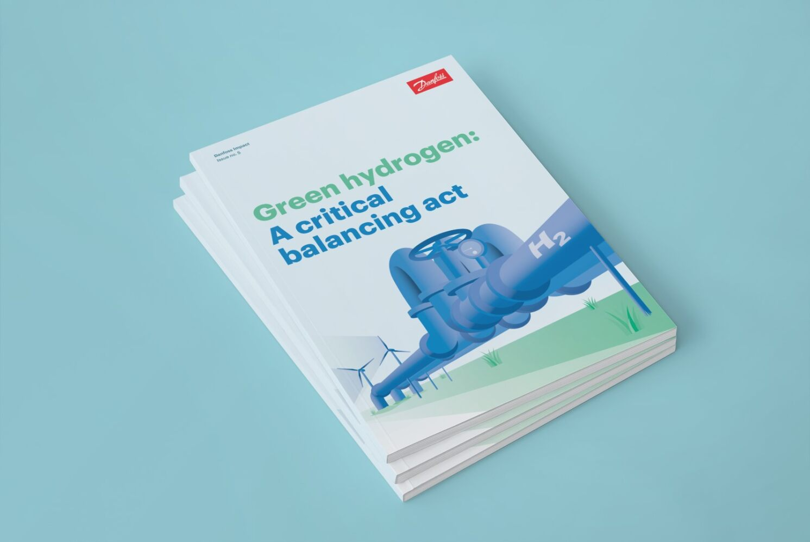
Technology could prove critical to lowering carbon emissions and reliance on fossil fuels in hard-to-abate sectors
The latest whitepaper in the Danfoss Impact Series, “Green Hydrogen: A Critical Balancing Act,” explores the opportunities and challenges for green hydrogen as governments and industry look for solutions to decrease carbon footprint and meet the goals of the Paris Climate Agreement. While the technologies needed to produce hydrogen efficiently are available, we need to be strategic about how, when and where we produce and consume it.
Green hydrogen offers an innovative solution to replace fossil fuels in hard-to-abate sectors – that are not easily decarbonized through direct electrification - such as aviation, long-distance shipping and heavy industry. In October 2023 the U.S. Department of Energy affirmed the U.S.’s commitment to hydrogen adoption, announcing a $7 billion investment in seven regional clean hydrogen hubs to accelerate the domestic market for low-cost clean hydrogen. The Department predicts that, as a result, the hubs will produce approximately three million tons of clean hydrogen annually.
To produce this hydrogen, the United States will use approximately 111 TWh of electrical energy. With the current level of electrolysis efficiency, this will result in approximately 24 TWh of excess heat. If connected to district energy systems, this heat could be captured and re-used. In fact, Danfoss analysis shows that this could be enough to provide heat to 1.7 million American homes per year, strengthening the case for investing in district energy systems.
With green hydrogen production requiring immense amounts of electricity, energy efficiency in its production is vital to its sustainability. While current green hydrogen conversion processes incur an energy loss of approximately 30%, existing technology can minimize this loss. For instance, efficient converters converting alternating current (AC) to direct current (DC) for electrolyzers can increase overall production efficiency by roughly 1%. Though seemingly small, a saving of 1% of the electricity demand in 2050 for hydrogen is enough to power London for almost four years.
Producing hydrogen in an efficient and cost-effective manner is essential for hydrogen use to be feasible, as is reducing costs and stress on electricity grids by producing hydrogen when there is excess (and cheap) renewable energy in the grid. Using hydrogen wisely is also critical; the electrolysis process used to produce green hydrogen is energy-intensive and as a result, hydrogen will continue to be a scarce and expensive resource.
But hydrogen can also help manage seasonal electricity demand. Concern over grid stability has increased interest in energy storage. Batteries are an effective short-term storage option, not as effective over the long term due to cost and capacity depletion over time. Green hydrogen, however, can hold large amounts of energy, by converting low-emissions electricity into hydrogen, with only a very little energy loss over time at a low cost per MWh.
When implementing solutions to reduce carbon emissions, energy efficiency and electrification need to come first. While green hydrogen can open doors for the transition to a green economy, focus should remain on direct electrification of as many elements of our energy systems as possible. But for hard-to-abate sectors, where electrification is not yet possible, green hydrogen provides a means to lower emissions and indirectly electrify operations. For example, while automotive transportation has a clear path to electrify, the aviation sector is expected to depend on hydrogen converted into a sustainable aviation fuel.

“Green hydrogen undoubtedly has an important role to play in the transition away from fossil fuels, especially for hard-to-abate sectors such as aviation, shipping and heavy industry,” said Rick Sporrer, president of Danfoss North America. “However, energy efficiency and renewable energy sources should be our first option. The potential of hydrogen and excess heat reuse can be a key to America’s energy independence and energy security.”

